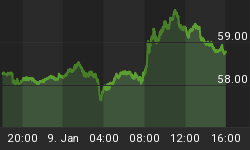Rally Killers?
In recent weeks, we have covered numerous misconceptions relative to rally killers:
- Stocks cannot continue to rise with PE ratios elevated.
- Rallies not led by financials are doomed.
- Investors have reached a euphoric state.
- Bubbles end when bubble talk is rampant.
- The 1987 crash came without warning.
Stocks Cannot Rise When Economic Growth Is Tepid
How about slow economic growth? Is it a rally killer? Mr. Livermore retweeted a little historical nugget this morning, which provided a link to a 1992 New York magazine article on weak economic growth and the great opportunity in defensive bonds.

Similar to 2013, investors were not particularly confident about future economic and stock market outcomes in the first quarter of 1992. Below are a few excerpts from the article which appeared in the February 24, 1992 issue of New York:
Recovery talk has all but ceased as economists begin to wonder just what can be done to get the woozy old U.S. economy back on its feet.
If the economy doesn't quickly snap out of its lethargy and begin to grow respectably, the stock market could get whacked. Yet the stodgy old bond market likes nothing more than slow growth that can't be speeded up, and with the long-term yield on bonds now hovering at more than twice the rate of inflation, a buying opportunity seems at hand.
There is no denying how far America's economic-growth expectations have fallen. The 2.2 percent growth rate, fourth quarter over fourth quarter, that President Bush now says the economy will achieve in 1992 is so puny by past standards as to be virtually invisible - scarcely half the rate of previous expansions.
Add it all up and a pessimist might conclude that, since there no levers to be pulled to speed up recovery, the nineties hardly are off to a rip-roaring start. On the other hand, an optimist might argue that a decade of slow growth doesn't have to be so bad after all - especially if you decide to pass the time in the bond market.
What Happened Next?
Despite a weak recovery and less-than stellar GDP figures, stocks exceeded bearish 1992 expectations. The blue arrow highlights February 1992, when the issue of New York referenced above arrived at newsstands.

Economy 2013
Positive economic growth, even slow growth, coupled with easy money policies from global central bankers could continue to be a bullish combination for stocks. Investors were greeted with good news Tuesday as housing permits jumped to the highest level in more than five years. From The Wall Street Journal:
The number of building permits issued in October rose 6.2% from a month earlier to a seasonally adjusted annual rate of 1.034 million, after rising by 5.2% in September, the Commerce Department said Tuesday. October's pace was the strongest since June 2008, during the last recession. From a year earlier, the pace of issued permits was up 13.9% in October.
Market Still Siding With Positive Growth Case
Just as in 1992, the present day stock market is in better shape than most would believe. This week's video compares pre-correction periods in 2011 and 2012 to the present day. The market's pricing mechanism continues to support the bullish case for equities, while the economy continues to grow at a slow pace.
Investment Implications
Like many of the "show stopper" topics covered in recent weeks, relatively slow economic growth is not a barrier to higher stock prices. The holiday week brings with it low trading volumes. With little selling pressure on the tape in recent days, a low volume drift-up in stocks could be in the cards. On Monday, we noted the big picture trends were bullish when viewed from daily, weekly, and monthly vantage points. If we zero in on the financial sector, it shows sustained demand from investors.

On the fundamental front, it is easy to understand that sound marketing on the internet, especially via hand held devices, is an integral piece of any profitable corporate pie. From Forbes:
Forrester released its list of top technology trends for the three year time horizon. The author of the report, Forrester analyst Brian Hopkins makes the point that now that consumers and employees have continuous connectivity and an endless supply of apps, the CIO must drive the nimbleness that will be demanded by employees and customers, while he or she must also do so securely. These trends are so woven into the business drivers, that IT leaders must become much more strategic, providing the rationale for the changes that are afoot. With this background in mind, Forrester identifies the following ten technology trends for the 2014 through 2016.
ETF investors have continued to embrace the ever-growing role of technology in our daily lives. The NASDAQ 100 ETF (QQQ) has provided healthy leadership for the broader stock market.

Our game plan remains unchanged; we continue to hold our stakes in U.S. stocks (SPY), technology (QQQ), financials (XLF), energy (XLE), small caps (IWM), global stocks (VT), and emerging markets (EEM). If the incoming fundamental and technical data shift to a more "risk-off" bias, our market model will begin to reduce risk in an incremental manner.
















